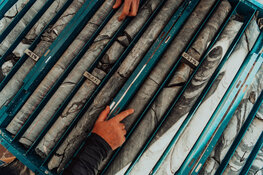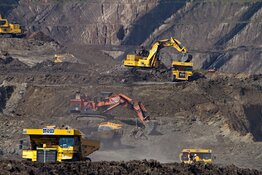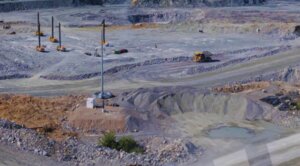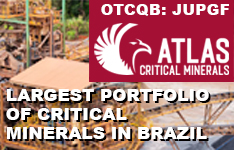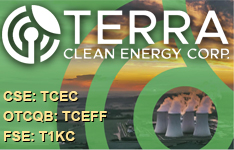Kevin Puil: The DRC is one of the last major undeveloped gold belts in Africa. Although it has had a troubled past, the Congo implemented new mining codes with the support of the World Bank in 2003 that have mitigated risk quite substantially. In 2006, the country held its first democratic elections in over four decades. The new parliament and government seem to be running the country very well.
TGR: Are the companies that are operating in the DRC doing anything else to mitigate the risk?
KP: Aside from the general security of any gold operation—being fenced and having security guards, etc.—they are working with the government more closely than they would in a more developed nation. They are also providing a lot of employment, community services and infrastructure, which the country needs, not to mention providing revenue to the government. I think that has helped mitigate political risk.
TGR: Banro Corp. (BAA:NYSE; BAA:TSX) just poured the first gold from its Twangiza oxide-gold project in the DRC, which you recently visited. Banro's mineral claims were once seized by the government, but Banro went to court to get them back. It took years, but eventually Banro won. How likely is that to happen again?
KP: Far be it for me to comment on what foreign governments are thinking, but Banro has worked closely with the government at every step in order to get Twangiza into production. I think that the conflict in the Congo looks to be over, but there could still be isolated incidents in certain areas of the country. From what I saw, its citizens want to move on.
I don't think companies will lose their licenses to operate. I think that the government understands that it needs to work with the mining companies because they contribute an ever-increasing part of the gross domestic product of the Congo. I think there could be a revision of some of the terms like there has been elsewhere in the world, such as in Peru and Mongolia. But I don't think the government is going to seize the assets.
TGR: How does the jurisdiction risk in the DRC compare with that of other gold mining areas in Africa, namely Mali, Ghana, Eritrea and Burkina Faso?
KP: There is certainly a country discount for some of these exotic locales. The DRC is currently where Mali and Ghana were maybe 10 or 15 years ago. The DRC is just starting to get some mining investment and learning how to deal with it. Luckily, some of these other countries have paved the road for the Congo. That should ease the transition of major mining operations in the DRC.
TGR: Did you feel safe when you were there?
KP: Absolutely, although I did have my reservations prior to going. You read a lot on the Internet and it can put the scare in you. But when I was there I felt as safe as I do in Burkina Faso or any South American country. There are always going to be areas of town you want to avoid, but we've got those problems here in California, too. The people we met in the Congo were all very friendly.
TGR: Banro is scheduled to produce 120,000 ounces of gold a year for about seven years at Twangiza. That's actually not a very long mine life. Do you expect Banro to add to its resource at Twangiza?
KP: Once you start a mine, more gold is often found, which extends the life of the mine. I would expect to see more than seven years on the Twangiza mine.
TGR: What else does Banro have in the pipeline that could be further developed with the cash that is going to be generated from Twangiza?
KP: Banro is scheduled to bring on about three mines in the next four years. It has three other projects: Namoya, Lugushwa and Kamituga. These are also potential multi-million ounce deposits with relatively low capital expenditure requirements. Seeing how quickly and how professionally the company put the Twangiza mine into operation, I have no doubt that it will be able to put the other projects into operation as well.
TGR: Another project you visited in the DRC was the Ngayu gold project of Loncor Resources Inc. (LON:NYSE.A; LN:TSX.V). Ngayu started to get more notice after Newmont Mining Corp. (NEM:NYSE) bought a 17.8% stake in the company in July. In a report published in May, Toronto-based GMP Securities had a buy rating on Loncor with a 12-month target price of $6.50. Why is this project, which is in the very early stages of exploration, garnering so much attention?
KP: The Ngayu project is very interesting. It's a banded iron formation within the greenstone belt, which is very high grade. Unlike Banro's projects, which are open-pit and large-scale operations, the Ngayu Makapela target appears to be narrow quartz veins, but extremely high grade. It would most likely be a small pit and an underground mine. The company also has a technical service agreement with Newmont, who thought well enough of the project to invest about $12 million.
TGR: Is there a chance that Loncor could do an open pit at the beginning and then go underground later?
KP: Absolutely. It is definitely possible for a starter pit to then go underground from there.
TGR: Peter Cowley, who was previously with Banro, heads Loncor. He took a number of the Banro people with him on the exploration side. What do you think of that management team?
KP: Cowley has a very experienced, capable team. Some of the company's technical people are second to none. I think both Banro and Loncor have very well-regarded management teams.
TGR: What about North Kivu in the Congo? Did you get a chance to visit that project, too?
KP: Yes, I did. It looks like sheeted quartz veins and stock work. It is early stage, but the company is expecting some channel samples by the end of this year. Some of the bulk chip samples were yielding very high-grade gold as well as some niobium and rare earths.
TGR: Is Ngayu the deposit that could make the company?
KP: I would say so. There are two reefs there that could easily be mined. In fact, there are artisanal miners on the reefs right now picking off some of the alluvials at the surface.
TGR: Sometimes that can be a problem for mining companies. With gold at $1,600/ounce, that can mean more than a year's wages for a lot of people in the DRC. Is that an issue?
KP: I don't see it as an issue. Both Loncor and Banro have incredible relations with the artisanal miners and the surrounding communities, and they employ a lot of the miners' families on their sites. I walked around and talked to some of the miners and looked at some of the pits that they are mining. They were all very friendly. Honestly, I don't see it as being a problem. It wasn't a problem at Twangiza and I don't really see it as a problem at Loncor's site either. In fact, I can’t recall visiting a mine where the company has such a good relationship with the community as I saw with Banro. It has set up a foundation that not only builds schools and hospitals for the locals, but also teaches them English, and provides training in such areas as agriculture, carpentry and motor mechanics. It's really quite impressive.
TGR: With the high gold price, are there other African countries that are stepping up gold exploration?
KP: Mali's always been an attractive place to mine, but the new up-and-comer is definitely Burkina Faso.
TGR: Did you also go there on your recent visit?
KP: Yes, I did. I was very impressed with the infrastructure there and the level of development that has gone on the last couple of years.
TGR: What projects did you visit in Burkina Faso?
KP: The one that most interested me was Volta Resources Inc. (VTR:TSX). Its Kiaka project is just southeast of the capital of Ouagadougou. It looks like it has about 5 million ounces (Moz) right now and I think there's potential for quite a bit more.
TGR: Is the land package that Volta is exploring contiguous with an existing operation?
KP: No, but it lies on the same greenstone belt and fault as the IAMGOLD Corp. (IMG:TSX; IAG:NYSE) Essakane Mine and Orezone Gold Corporation's (ORE:TSX) Bomboré deposit. There is not much around it, and it looks like this will be an open pit. It is fairly shallow, it has got a long strike, it is open at depth and there is good infrastructure. There's a paved road two-thirds of the way there, and an abundant amount of water available year round, which is key in Africa.
TGR: Has Volta done a prefeasibility study?
KP: Its prefeasibility on Kiaka should be done by the end of this year.
TGR: Do you think that could be a catalyst for the share price?
KP: Absolutely. From what I've seen, the environmental work is going well. With the open pit scenario and fairly good grades, I think it's going to be a fairly robust feasibility study.
TGR: Could any of the projects in this area be consolidated by a larger company?
KP: I never invest in a company with a takeover as my end game. I always want to invest in companies that have the wherewithal and the expertise to put a mine into production, like the Volta team. I'm very confident they could put a mine into production.
But you can't discount large companies taking over companies with deposits in the neighborhood of 5 Moz. For example, IAMGOLD is operating in Burkina Faso with an excess of cash right now. It would make sense that it would want to secure some more ounces in the ground in a country where it is comfortable doing business.
TGR: Is it just a matter of companies like Orezone and Volta continuing to derisk these projects so that IAMGOLD, or a similar company, feels more comfortable with a takeover?
KP: Absolutely. Any of the majors that are in West Africa, including AngloGold Ashanti Ltd. (AU:NYSE; ANG:JSE; AGG:ASX; AGD:LSE), Newmont and Kinross Gold Corp. (K:TSX; KGC:NYSE), would like to see that the juniors prove up enough ounces and do enough work in terms of scoping and feasibility to substantially derisk the project for them. You can bet that all these majors are aware of any company that can prove up 5 Moz or more is looking at the data from every drill hole.
TGR: What advice might you offer an investor looking to get some exposure to African gold plays?
KP: Not all ounces are equal. Investors should seek out projects with good management, which could be standalone mines with robust economics and a low cost of production. They shouldn’t invest in a company whose only exit strategy is to be acquired by a major.
In terms of political risk, a lot of these countries are definitely less risky than they used to be 10 years ago, but even Burkina Faso and DRC are not without risk.
TGR: Do you believe jurisdictions in Africa will ever be as "risk free" as projects in Australia or Canada, for example?
KP: Every jurisdiction has risks, but they are just a different set of risks. In Canada and Australia, the risks might be more in terms of permitting or native land claims, whereas in South America or Africa the risks might be more of a political nature.
TGR: Well said, Kevin. Thanks for your insights today.
A Chartered Financial Analyst (CFA) with more than 15 years experience in the investment management business, Kevin Puil currently serves as portfolio manager at Malcolm H. Gissen & Associates Inc. in San Francisco and as senior analyst for its Encompass Fund. The Encompass Fund, which focuses on global resource companies exploring for and producing gold and silver, copper, uranium and rare earth elements, racked up a healthy 60% return in 2010, following a spectacular 139% in 2009. Before relocating to California, Kevin worked in Canada, where he also studied economics at the University of Victoria and the University of British Columbia.
Want to read more exclusive Gold Report interviews like this? Sign up for our free e-newsletter, and you'll learn when new articles have been published. To see a list of recent interviews with industry analysts and commentators, visit our Exclusive Interviews page.
DISCLOSURE:
1) Brian Sylvester conducted this interview. He personally and/or his family own shares of the following companies mentioned in this interview: None.
2) The following companies mentioned in the interview are sponsors of The Gold Report: Banro Corp., Loncor Resources Inc., Orezone Gold Corp.
3) Kevin Puil: I personally and/or my family own shares of the following companies mentioned in this interview: Volta Resources Inc. I personally and/or my family am paid by the following companies mentioned in this interview: None.


